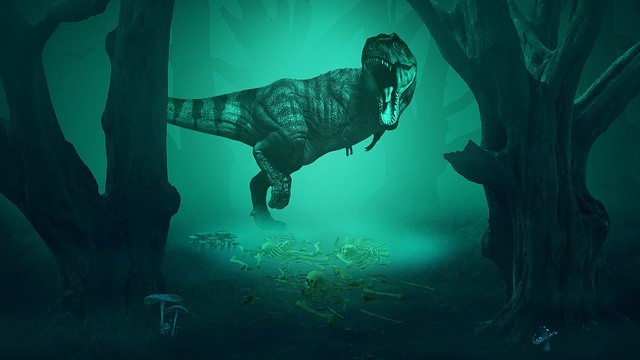
A new study suggests that T. Rex developed tiny arms for a good reason, not to be humorous. One idea why they got so tiny for a specific reason, and it was relevant too. Some had said it's about grasping or slashing another dinosaur or holding a partner during procreation.
Tiny Arms of the T. Rex Lowers Risk of Getting Bitten
A recent study proposes a wild theory that these dinosaurs had small arms to lessen the chances of getting bitten by another Tyrannosaurus rex, reported Science Alert.
Kevin Padian, an integrative biologist at the University of California, Berkeley, said what if several adult tyrannosaurs fought over remains; that would have the most vicious dinos trying to get more meat. They might tear off an appendage to make a point to stay away by biting arms off, cited Phys Org.
Having small limbs in these large predators is better because they are not used in hunting anyway.
Scientists are getting more ideas due to fossils of skin, feathers, and even a butthole how bones are situated. Some hints are even imprints of their feet that will say how they lived.
Answers to how they have evolved are hard to determine due to how birds act or their genomes. The Tyrant-lizard has too many questions to answer. The size of the T.Rex and its tiny arms is silly when it's 14 meters long and has an almost four-foot skull. Arms would measure a meter long.
Advantages of Small Limbs
Padian investigated the friend arm chomping hypothesis and used a Tyrannosaurus specimen MOR 555, cited the Smithsonian Mag.
The Tyrannosaurus Rex has always caused arguments over its out-of-place arms, which have been the subject of how it came about.
He suggests that some of the initial ideas, such as the sexual aid and slashing arms hypothesis, are unlikely based on these measurements, as their arms are merely too little and frail to be functional.
One of the best advantages of having small arms is lessening the chances of it getting torn off by an angry predator. It might be an advantage to avoid trouble when more than one of these predators is around.
Padian added that nature decided to develop shorter arms that would not come within reach of the strongest jaws in nature in the long run. Injured arms can lead to infection, and diseases that can cause death could have driven evolution.
He stressed that it was a secondary function of selection for something else; from the start, small limbs had limited function no more.
One way to test the hypothesis or other ideas is that scientists have noticed fewer bites on the tiny limbs than on other body parts. Dr. Padian stresses that earlier ideas are not possible.
Next, an integrative approach could be used for social and feeding behaviors and even ecological factors and mechanical contexts. Therefore, the T.Rex with tiny arms is no accident and was due to secondary evolutionary mechanisms at play.
Related Article: Cockroaches Remained Crawling on Earth When the Asteroid Killed the Dinosaurs Which Proves Ability To Survive After Human Extinction
© 2025 HNGN, All rights reserved. Do not reproduce without permission.








